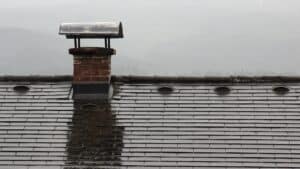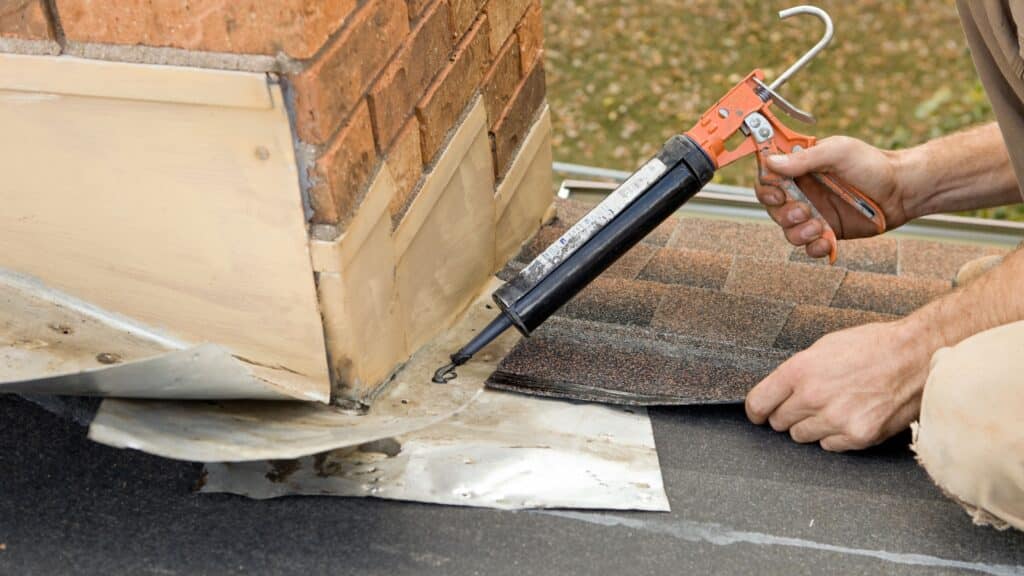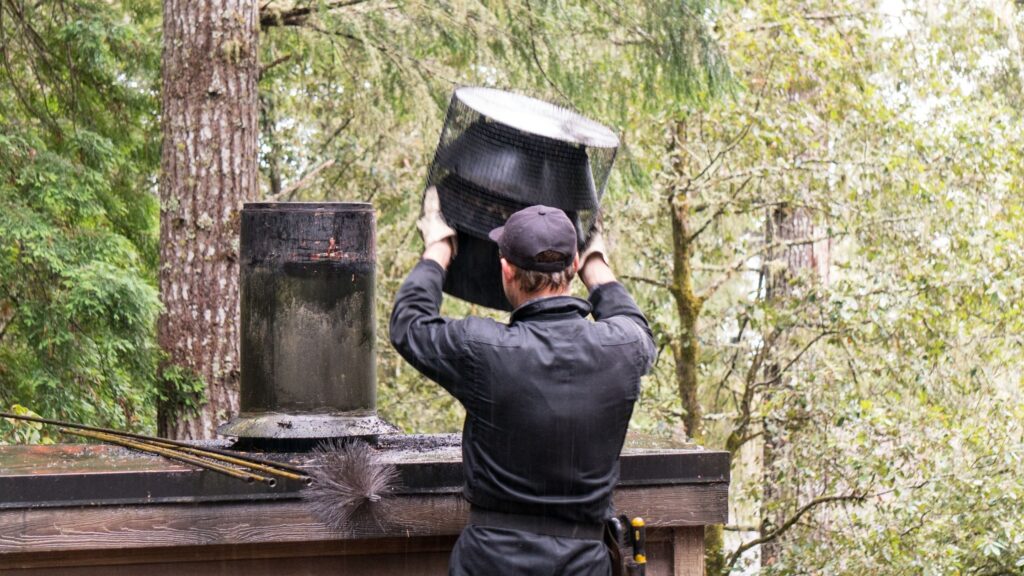For homeowners in Catskill and Orange County, wood-burning fireplaces and stoves offer a charming and efficient way to stay warm during the winter months. However, the enjoyment of a crackling fire comes with a crucial responsibility.
Creosote is a highly flammable byproduct of wood combustion that accumulates in your chimney flue over time. While regular cleaning can address early-stage buildup, stage 3 creosote presents a unique and potentially dangerous challenge.
This blog delves into the importance of understanding and addressing stage 3 creosote removal, ensuring the safety and efficiency of your chimney system.
What is Stage 3 Creosote?
Creosote forms as a tar-like substance during wood burning. It condenses on the inner walls of your flue, gradually accumulating over time. Initially, creosote appears as light and fluffy flakes (stage 1) and progresses to a harder, glazed layer (stage 2). However, creosote can reach stage 3 if left unattended, transforming into a thick, tar-like substance that adheres firmly to the flue liner.
Stage 3 creosote is exceptionally dangerous for several reasons:
- Increased Fire Risk: Stage 3 creosote ignites at a much lower temperature than regular wood, significantly increasing the risk of chimney fires. Even a stray spark can ignite this highly flammable material, potentially leading to devastating consequences.
- Reduced Efficiency: Thick creosote buildup acts as an insulator, hindering the proper venting of smoke and reducing the heating efficiency of your wood-burning appliance. This can lead to increased fuel consumption and decreased warmth output.
Recognizing the Signs of Stage 3 Creosote

Ignoring stage 3 creosote puts your home and family at risk. Fortunately, several signs can help you identify this dangerous buildup:
- Difficulty maintaining a draft: A good draft is essential for proper chimney function. If you struggle to keep the fire burning consistently or experience frequent backdrafts, it could indicate significant creosote buildup.
- Visible creosote deposits: While stage 1 and 2 creosote might be difficult to see, stage 3 manifests as thick, tar-like deposits clinging to the flue liner, visible through the stovepipe opening.
- Unusual odors: Burning wood typically produces a pleasant, smoky aroma. However, strong, unpleasant odors emanating from your chimney can indicate incomplete combustion due to excessive creosote buildup.
- Reduced heating efficiency: As mentioned earlier, a significant creosote buildup can hinder heat transfer, decreasing warmth output despite burning the same amount of firewood.
Why Professional Stage 3 Creosote Removal is Crucial
Attempting to remove stage 3 creosote yourself is highly discouraged. The thick, tar-like substance requires specialized tools and techniques to ensure thorough cleaning without damaging the flue liner.
Here’s why professional creosote removal is crucial:
- Expertise and Safety: Trained professionals possess the necessary skills and equipment to safely and effectively remove stage 3 creosote. They can employ various methods, including chemical treatments, mechanical scraping, and rotary cleaning tools, depending on the severity of the buildup.
- Flue Inspection: During the cleaning process, professionals can thoroughly inspect your flue liner for any cracks, damage, or deterioration caused by the creosote buildup. This allows for timely repairs or replacements, preventing further issues.
- Peace of Mind: By entrusting stage 3 creosote removal to professionals, you gain peace of mind knowing your chimney is clean, safe, and operating efficiently. This ensures the continued enjoyment of your wood-burning appliance without the worry of potential fire hazards.
Preventing Stage 3 Creosote Buildup
While professional removal is essential for addressing stage 3 creosote, several practices can help prevent its formation in the first place:
- Burn only seasoned firewood: Using properly seasoned firewood burns hotter and cleaner, producing less creosote. Avoid burning green or wet wood, as it contributes significantly to creosote buildup.
- Maintain proper airflow: Ensure adequate ventilation in your home to maintain a good draft in your chimney. This helps draw smoke and combustion gases efficiently, preventing excessive creosote condensation.
- Schedule regular chimney inspections and cleaning: Regular inspections, ideally annually, allow for early detection of creosote buildup and prompt cleaning before it reaches stage 3.
Take Action: Schedule Your Stage 3 Creosote Removal Today
If you suspect stage 3 creosote buildup in your chimney, don’t hesitate to contact a qualified chimney sweep in Catskill or Orange County.













